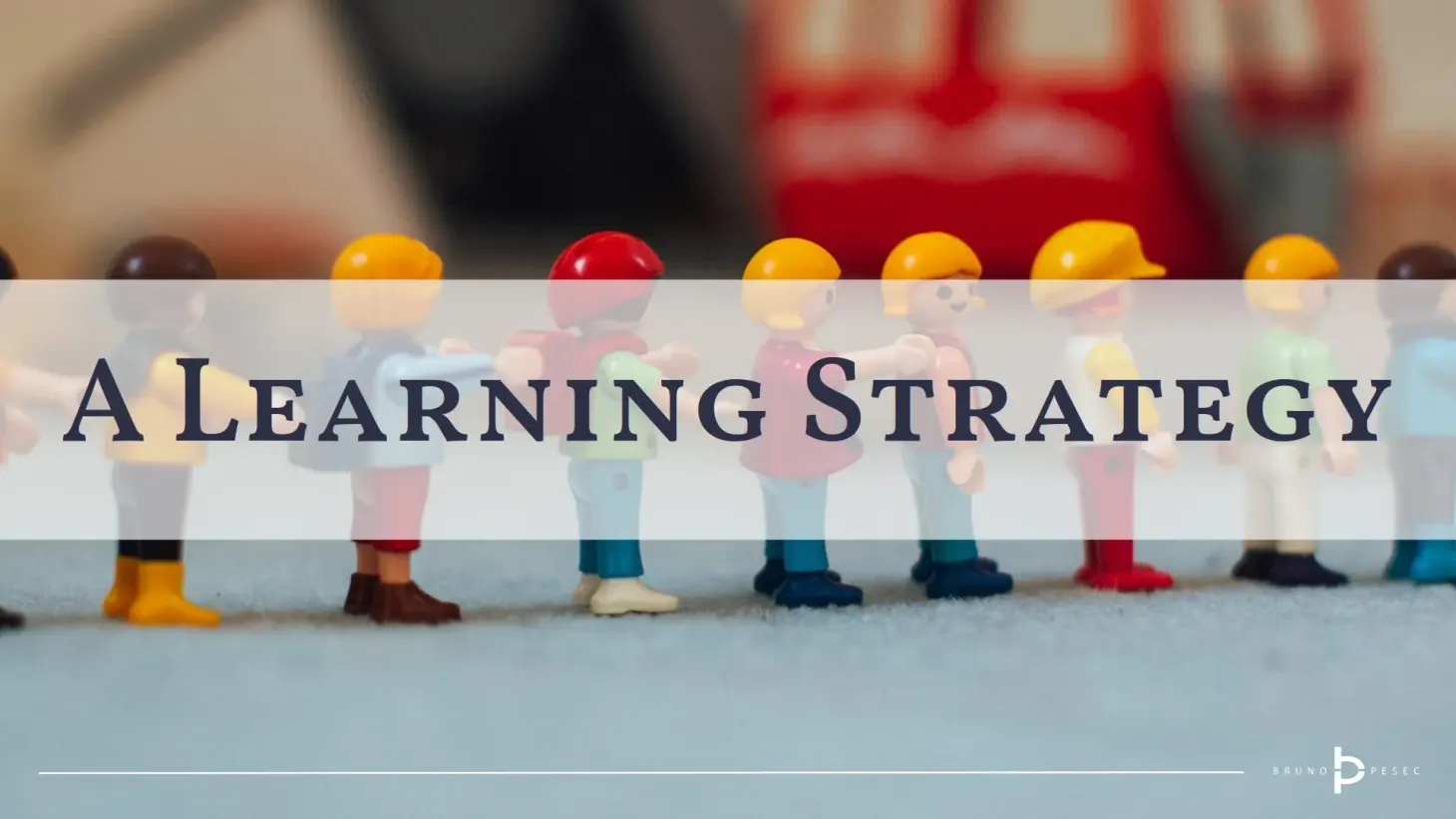How to prioritise insight rapidly?
You've learned so much, and now have a question - what to do next? Here is a three step process for going from insight to action in 40 minutes.

Sometimes we are overwhelmed by amount of insight we collect and generate from our research and experiments.
How to make sense out of it all? How to decide what to do next?
Here is quick and dirty way to achieve that in 40 minutes or less:
- structure insight,
- label insight, and
- prioritise insight.
Prerequisites:
- documented insight (format doesn't matter),
- lack of clarity of what would be best to focus on next, and
- physical or digital set-up so you don't waste time on looking for sticky notes and markers.
Here are the steps, with pictures to illustrate the key points.
Structure
Begin by putting up all your insight.
If you are using sticky notes or index cards try to limit one insight per note, whenever possible.
Same rule applies if you are using digital whiteboard or similar software.
When you are done you will have a messy overview of your insight:
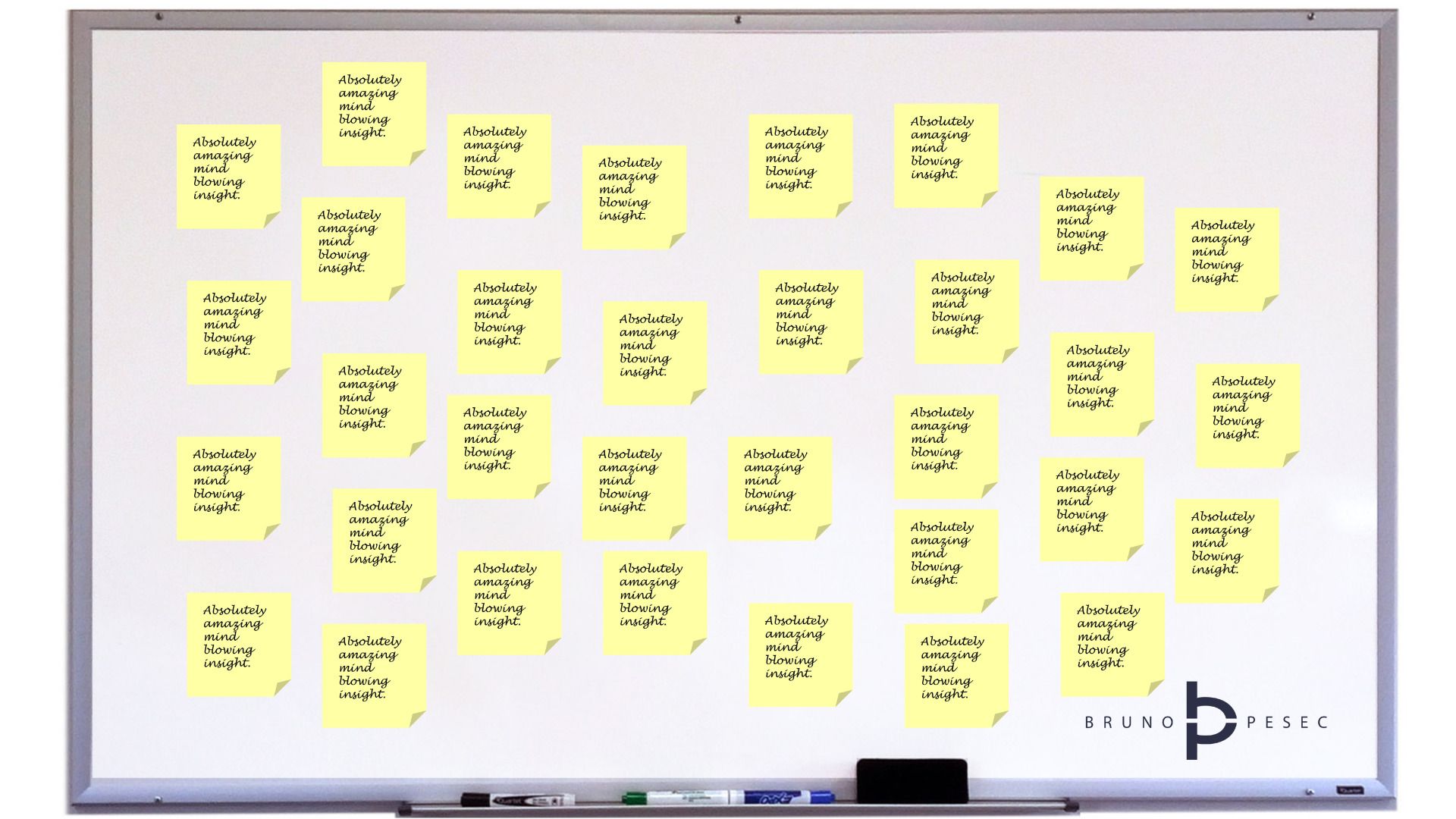
After you've put up all the notes take a few steps back and look at the big picture.
Are there any duplicates?
If there are exact duplicates feel free to discard them.
Make sure to check with the team if they are fine with that.
Are there any similar notes?
Group them together.
Are there notes that form a topic or theme?
Are there any patterns?
Group them together.
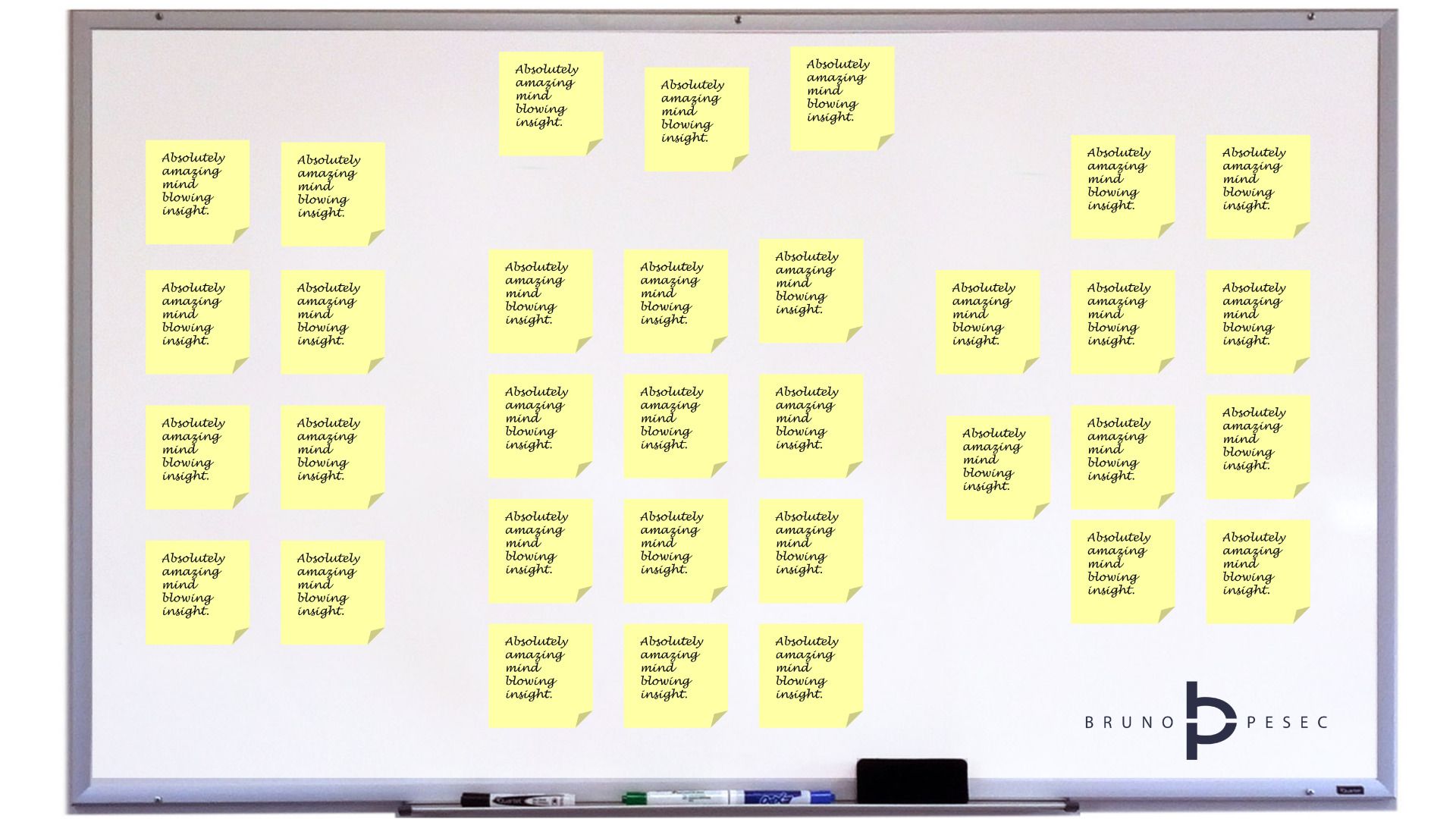
Label
Start by labelling your themes.
What is common to all notes in that cluster?
Discuss orphans – notes that don't fit into any theme:
- Why are they orphans?
- Is it due to how the notes are written?
- Are they accidental learning?
- Are they outliers?
After you've finished labelling your clusters, you'll have a structure to work with:
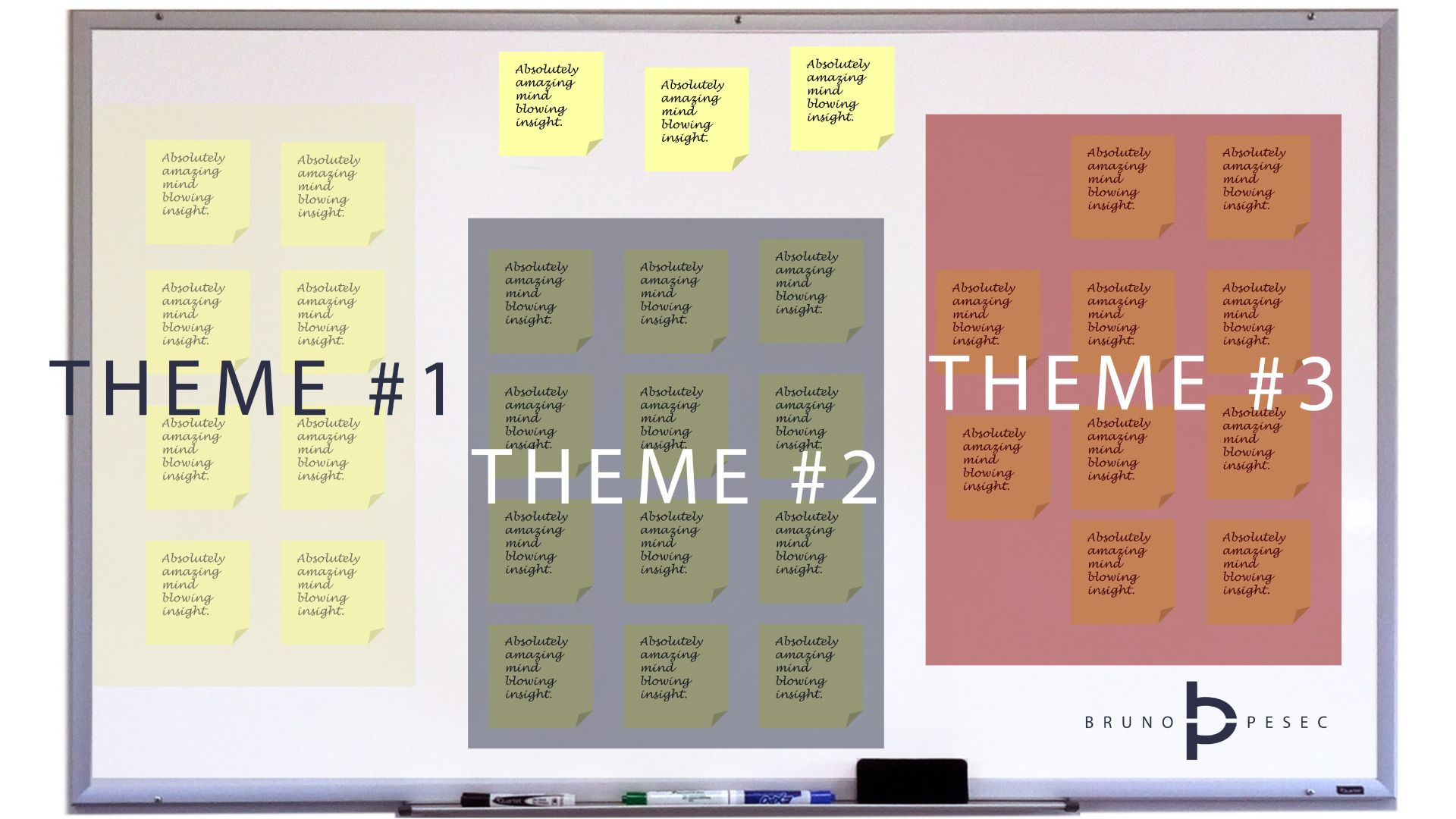
Once you've labelled clusters, move to labelling notes.
That can reveal additional clusters, patterns, relationships, and interactions.
Depending on the amount of insight and notes you have you can decide to label notes within specific theme, or all of them.
Don't introduce more than three labels.
Different sets I like to use are:
- Desirability, feasibility, viability.
- Customer, product, market.
- Problem, solution, implementation.
Depending on the insight I'm working with I'll decide on the label set I use.
Sometimes labels are purely contextual.
After you've defined the labels, just mark notes with sticky dots or marker pens:
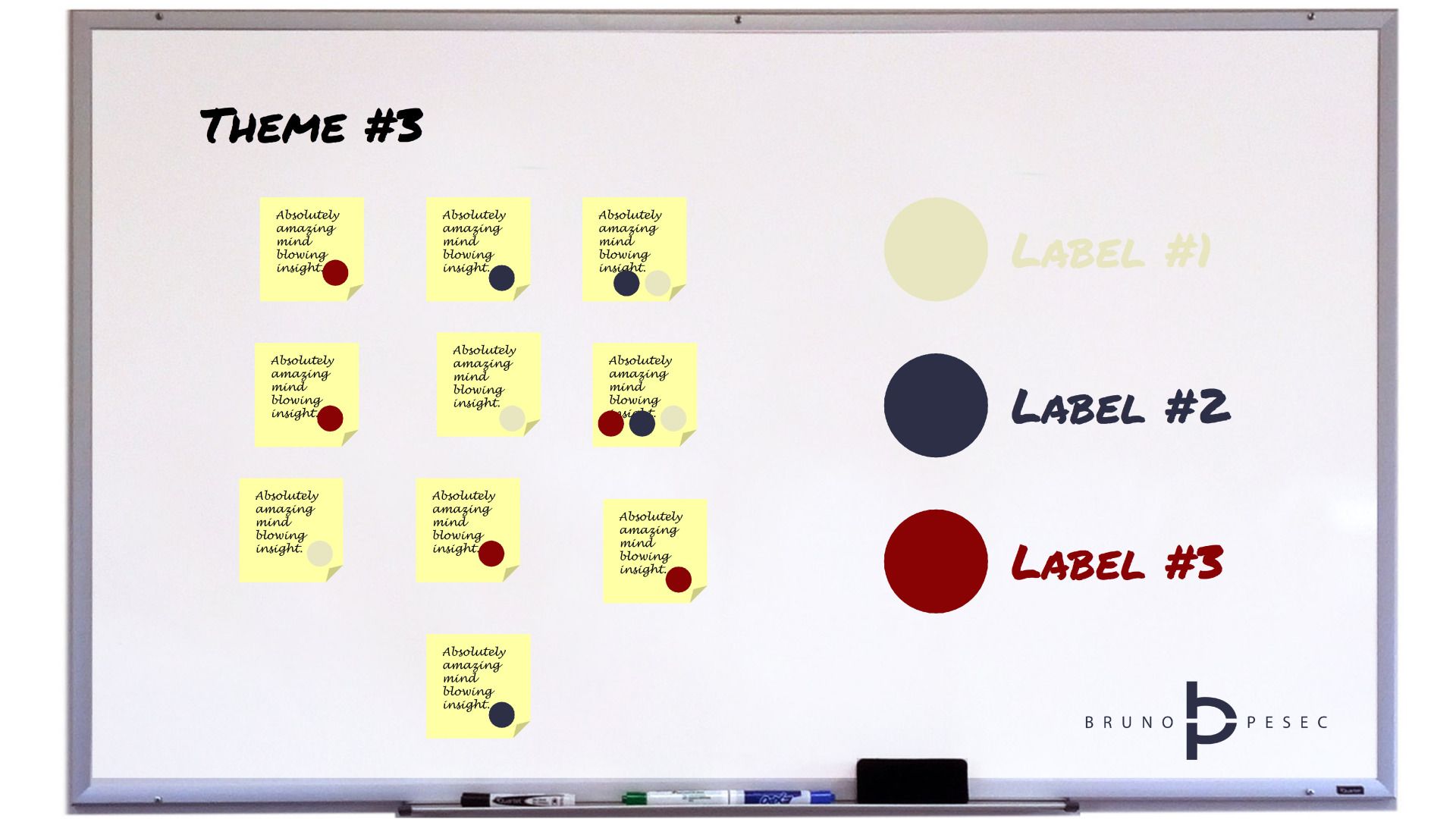
Prioritise
Define two prioritisation criteria at a high level.
For example: we will consider potential impact from acting upon this insight as well as how much effort would that action take.
My favourites are impact / effort and impact / uncertainty.
Draw a horizontal line for first criterion, and vertical line for second, forming a plus sign:
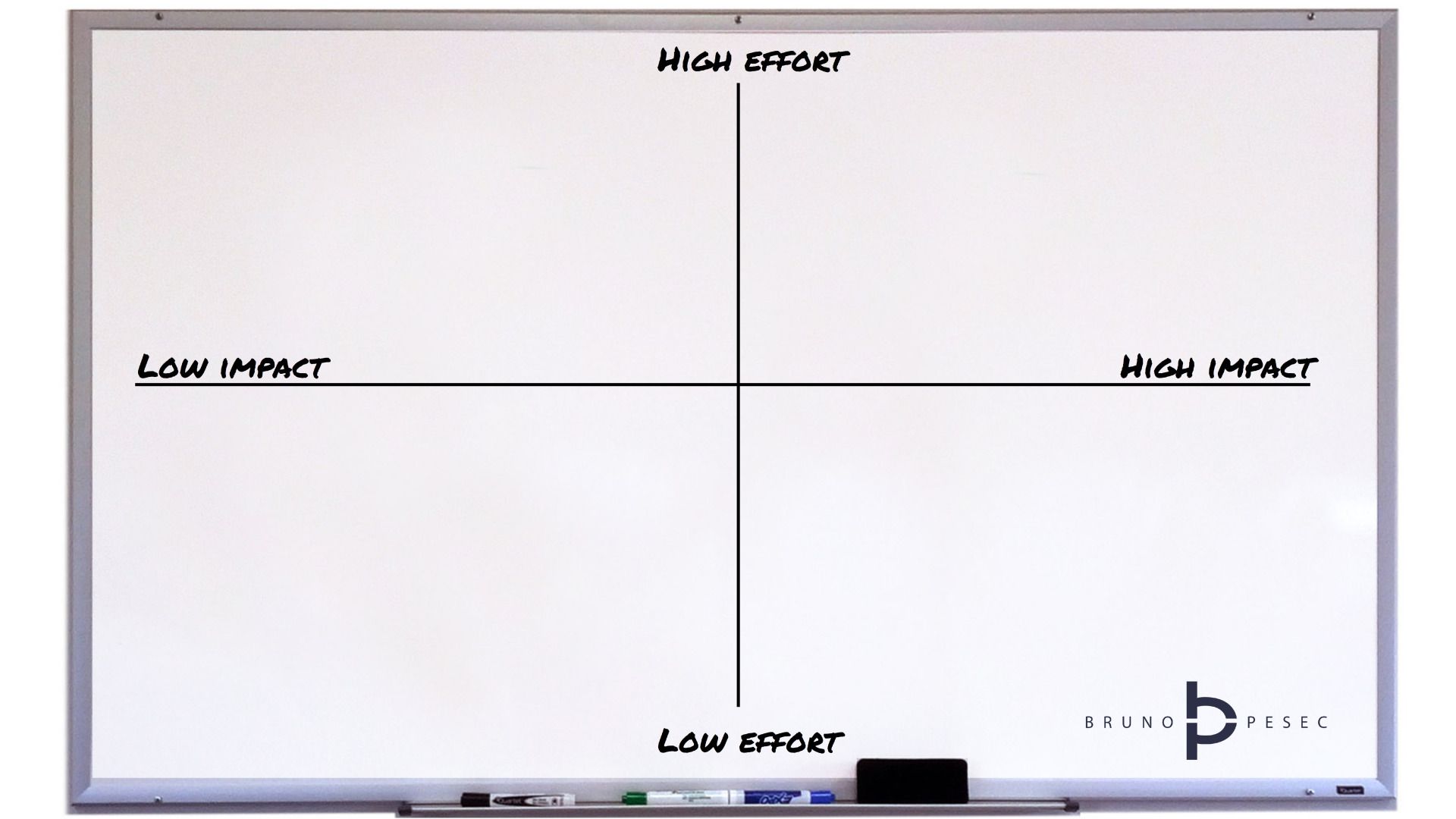
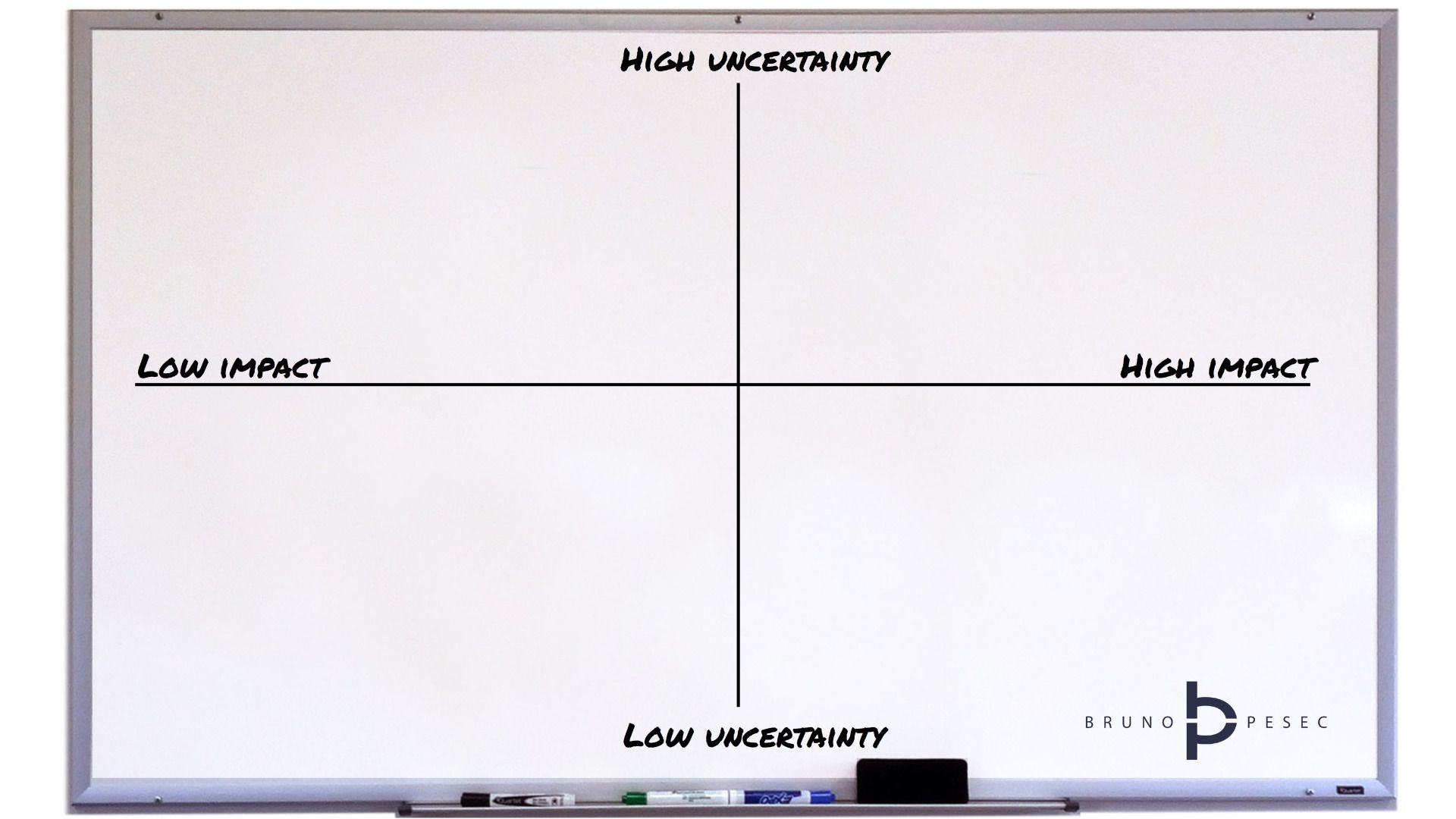
Before populating it with notes you need to agree on the meaning of low and high. Here are few helpful considerations:
- It doesn't have to be perfect, and it doesn't have to be absolute.
- It is more important that you, as a team, agree on the meaning.
- This prioritisation is not supposed to be eternal. It is supposed to help you decide on what to do next. That's it.
- Relative definitions are acceptable. For example, you could define high impact as "Remember Project X? That one had high impact. How close is this insight to that?"
- All ranking will be assumed and subjective. That is not a problem. Problem is forgetting that, and confusing your ranking as being objective and set in stone.
Once you have drawn up two prioritisation criteria, you can start populating the matrix with notes.
Go note by note.
Don't spend too much time on any single note, use timer if you must.
(If you are afraid that all your notes might end up as high impact you can use the trick from Dan Toma: start by positioning all notes on horizontal axis, and then go note by note and position them vertically.)
When you are done you should have something like this:
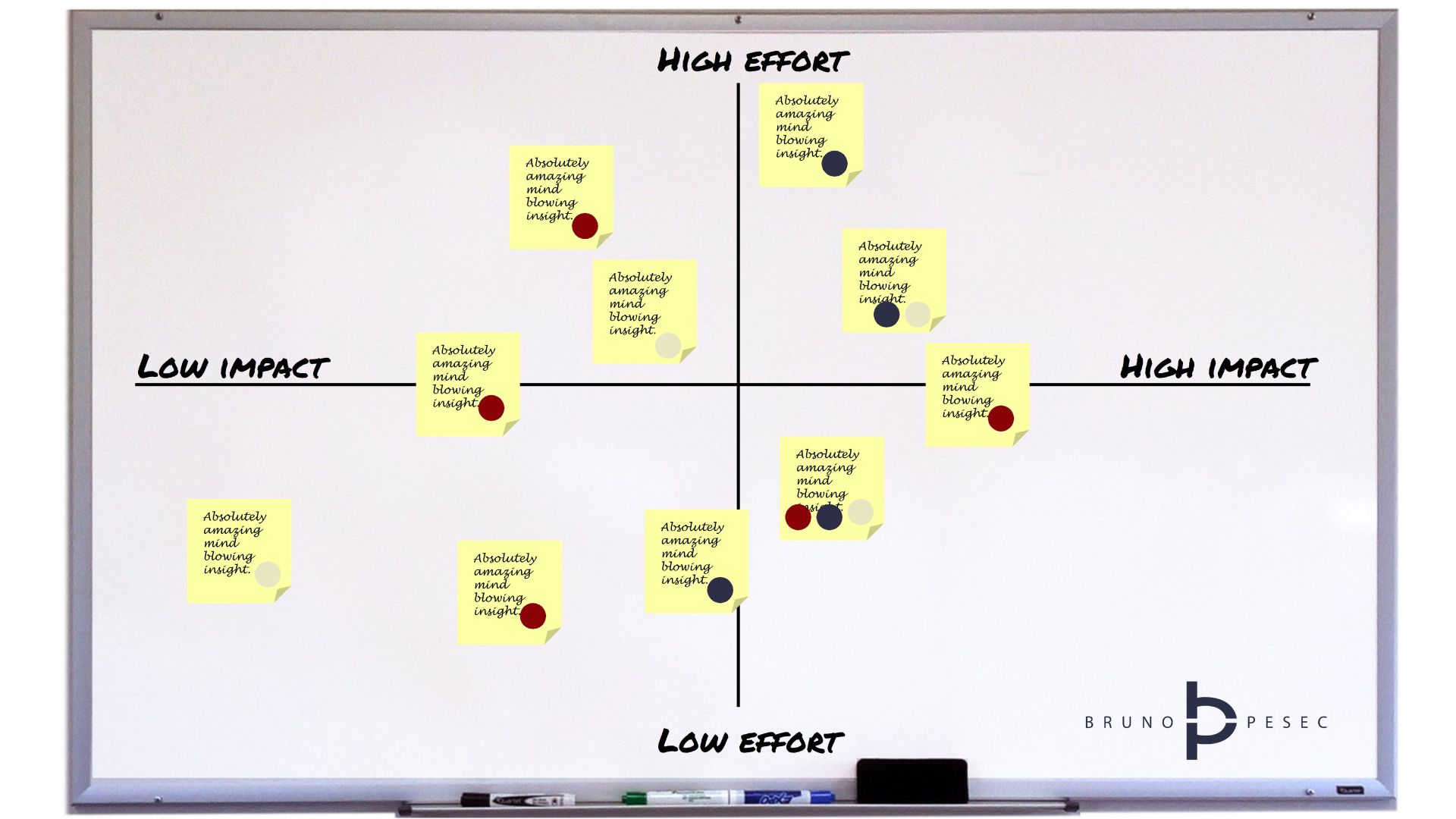
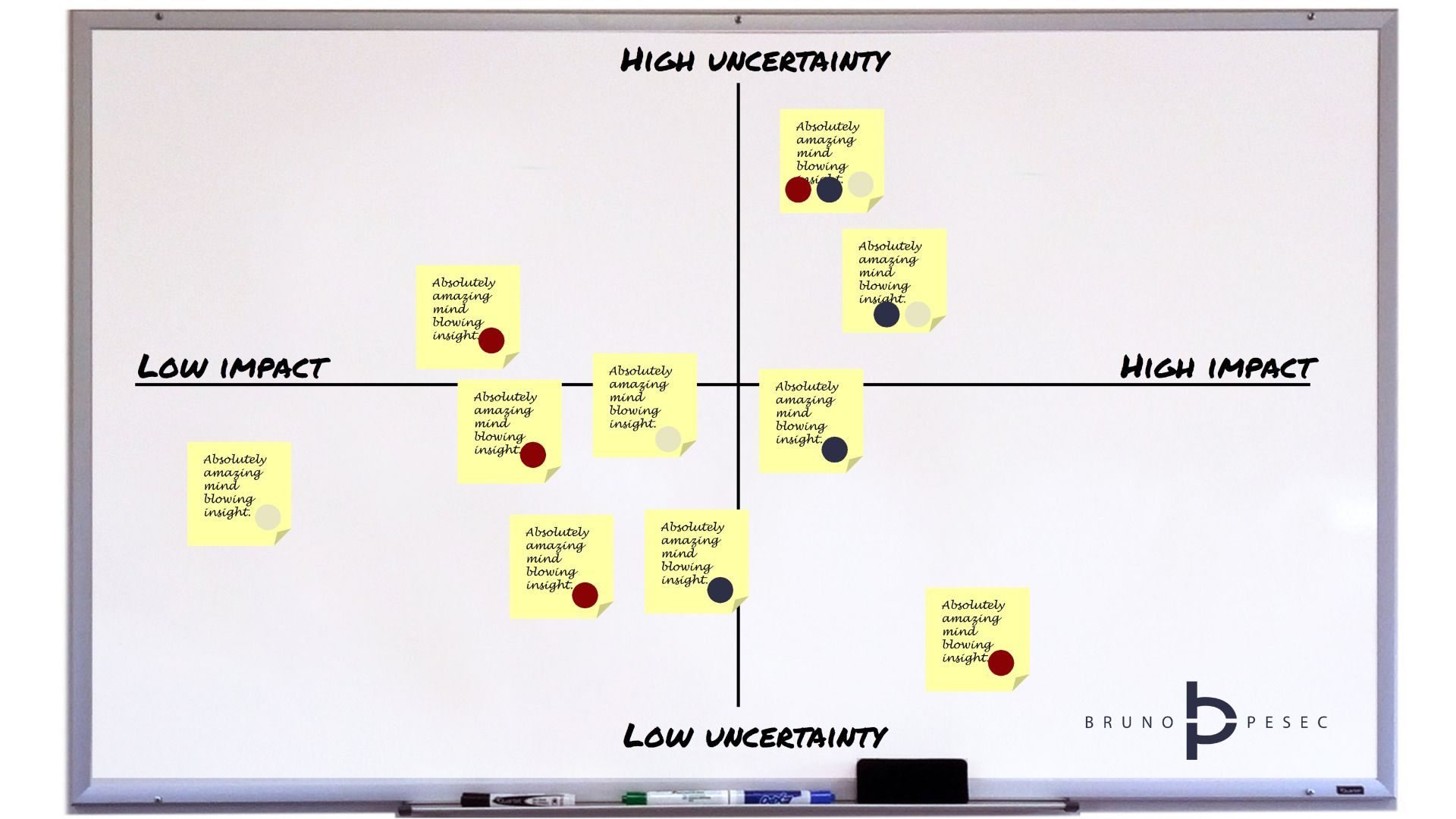
Ask yourself does this make sense?
If it does, ask what would be best spend of our time next week?
It will most likely be something from the high impact area.
Select up to three notes to focus on. That helps maintain focus and speed.
For each define who is responsible, by when should action be taken, and how (or what, if you'd prefer triple-w) should it be done:

Take some photos or screenshots to document your work.
(Don't forget to clean-up your mess.)
That's it, you prioritised your insight in 40 minutes.
Now, take that action, and keep on learning. Discipline pays off.
Bruno Unfiltered
Subscribe to get the latest posts delivered right to your inbox. No spam. Only Bruno.



